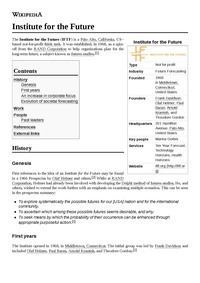Session 6, Tercer Grado – Comunicación y Lenguaje Idioma Extranjero
| Guías metodológicas para el docente de Ciclo Básico/Comunicación y Lenguaje Idioma Extranjero/Tercer Grado/Session 6 | |
|---|---|
| (Selecciona [Contraer] para reducir el recuadro, [Expandir] para ver contenido no mostrado). | |
| Autor | Ministerio de Educación de Guatemala |
| Área | Comunicación y Lenguaje Idioma Extranjero |
| Nivel y/o grado | Básico 3er grado |
| Competencia | |
| Indicador | |
| Saber declarativo | |
| Tipo de licencia | Derechos reservados con copia libre |
| Formato | HTML; PDF |
| Responsable de curación | Editor |
| Última actualización | 2020/10/07 |
Por favor, califica el recurso solo si lo has revisado y/o o usado.
Introduction[editar | editar código]
This unit is about how technology available now will be used in the future, and about new technologies to come.
Didactic resources[editar | editar código]
- Browser search engine
- Dictionaries
- Recycled or reused material
- YouTube
Session 6, Period 1[editar | editar código]
Initial Phase[editar | editar código]
Have students investigate what uses drones have. Have them present a list.
Once students have a list of activities drones are used for, organize them in threes and have teams think about and predict what other uses drones will have soon.
You may wish to watch the following video to have an idea of the students' possible answers.
Refer students to the workbook, based on “Robot Drones in the Sky” in Spotlight English.
Intermediate Phase[editar | editar código]
Have students present their predictions to the class.
Wrap up[editar | editar código]
Students should ask two people at home if they know what drones are used for, and if they have seen or used one.
Session 6, Period 2[editar | editar código]
Initial Phase[editar | editar código]
Start the period by having students share the information they have brought back from home with the class.
Have students in trios investigate which technologies will be the most important for agriculture 10 years from now.
Use for reference the following video about the future of agriculture.
Refer Students to the workbook.
Intermediate Phase[editar | editar código]
Have students use a Venn diagram to show similarities and differences between agriculture today and 10 years from now according to their investigation. Have them list the new technologies that will be used for farming.
Wrap up[editar | editar código]
Have students list the advantages and disadvantages that farming in the future will have. Encourage students to express their opinions.
Session 6, Period 3[editar | editar código]
Initial Phase[editar | editar código]
Have your students investigate what the Institute for the Future is. Allow them to use the internet if available. If it is not, you may wish to print and copy the Wikipedia article.
Intermediate Phase[editar | editar código]
Have students summarize the information about the Institute for the Future, writing at least one clear paragraph on what its work is about.
Check that students mention at least 3 different activities the Institute for the Future works on.
Wrap up[editar | editar código]
Show students the following video.
Have students write sentences explaining what they think scientist’s goals are, according to the video. Watch the video again if necessary.
Sistema social para expresar ideas y manifestarlas al prójimo. Este sistema existe dentro de un entorno social (sistema social) y un sistema lingüístico (ejemplos son el español, francés, k’iche’, kaqchikel, etc.) Tienen que existir ambos sistemas para que pueda existir la comunicación.

